To create a beautiful flower bed, you need to consider not only how to correctly combine flowers in terms of flowering time and soil requirements. It is important that the colors are in harmony with each other – knowledge of the rules of the “color wheel” used in the preparation of successful clothing ensembles will come in handy here. However, it is not always necessary to follow strict canons – unexpected combinations of plant colors will make your flower bed outstanding.
Successful color combinations in the flower garden and in the flower bed (with photo)
The beauty of flowerbeds and rabatok depends not only on the plants themselves, but also on the correct selection of colors of flowers and leaves. When combining colors in a flower bed, you need to know the features of individual colors. There are three main ones: red, yellow and blue. From mixing colors, derivatives are obtained. For example, red and yellow form orange; yellow with blue – green; red with blue – purple.
Colors red, orange and yellow, as brighter, are called active and warm. They always seem to come to the fore. Green, blue and purple are less bright and are called passive, cold colors; they seem to be far away.

All pure colors of the spectrum can be placed in the so-called color wheel in the following sequence: red, orange, yellow, yellow-green, bluish-green, cyan, indigo, violet.
Colors that are in this circle in opposite places are called complementary. For example, complementary to red will be bluish-green, to orange – blue, to yellow – blue, to yellow-green – violet.
In the case when two complementary colors are next to each other, they reinforce each other.
Based on these features, it is possible, when combining colors in a flower garden, to strengthen or weaken some colors with others.
So, orange next to blue seems even brighter, and blue becomes colder.
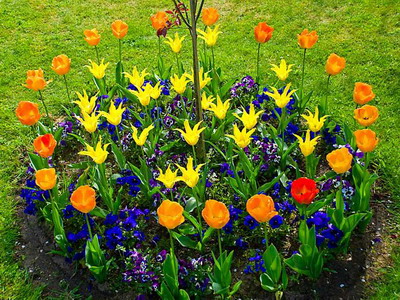
Red is enhanced when combined with green.
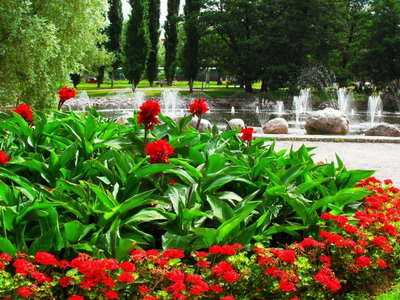
When the active colors – red, orange and yellow – are placed next to the passive ones – green, blue and blue, then such combinations constitute the so-called harmonious contrasts.
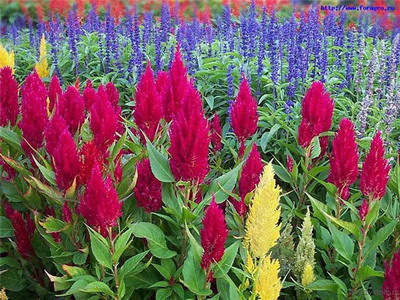
If one color from a pair has light shades, for example, orange, then you need to select a complementary color with light shades, in this case, blue.

If two colors are placed side by side that do not complement each other, then it seems that they have been mixed with a shade that complements the other color. This is why red or green colors next to blue seem to turn yellow: red next to yellow becomes purple, purple, and green turns blue; on the contrary, yellow next to red seems to turn green.
White, silver gray and dark gray are called neutral colors.
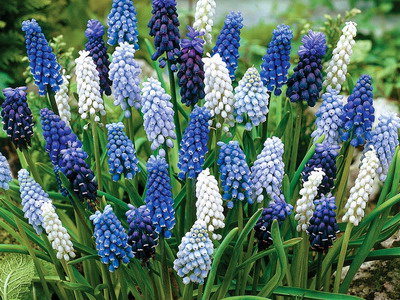
When combining colors of flowers, they should be placed between inharmonious colors: blue and purple or yellow, between red and purple, between red and yellow, etc.
Look at photos of successful color combinations in a flower bed – following certain rules, you can create a real masterpiece:

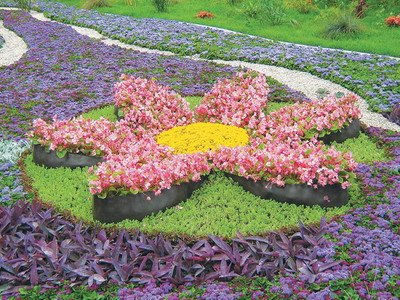

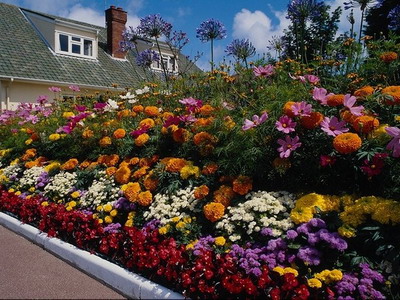
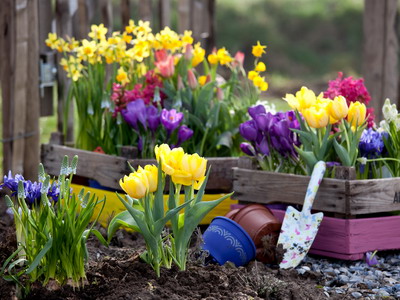
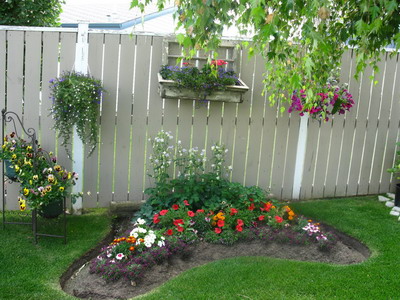
The combination of colors of flowers: harmony of colors
In addition to a harmonious contrasting combination of colors, plants are also placed according to the rules of simple color harmony, which consists in the gradual transition of one color to another. For example, red – in dark pink, purple – in carmine.
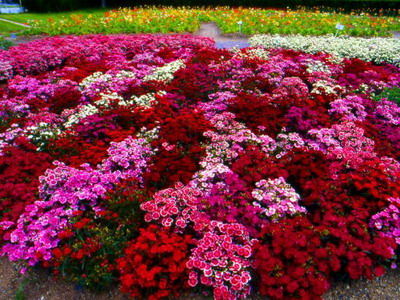
In flowerbeds that are visible from afar, flowers are planted according to the rule of a contrasting combination of colors so that they are bright, create an expressive, joyful picture.
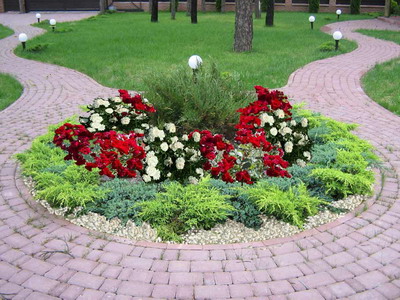
And how to combine flowers in small flower beds? In this case, flowers can be planted on the same flower bed both according to the rule of contrast and according to the rule of harmony. In this case, two or more plants of harmonious colors are planted in the middle of the flower bed, and flowers that form contrasts are planted towards the edges of the flower bed. For example, in the center is a red-leaved amaranth, around it is red tobacco, in the middle are pink and white asters ; along the edges of the flower bed, you can plant orange tagetes or arrange a border of blue lobelia or ageratum.







